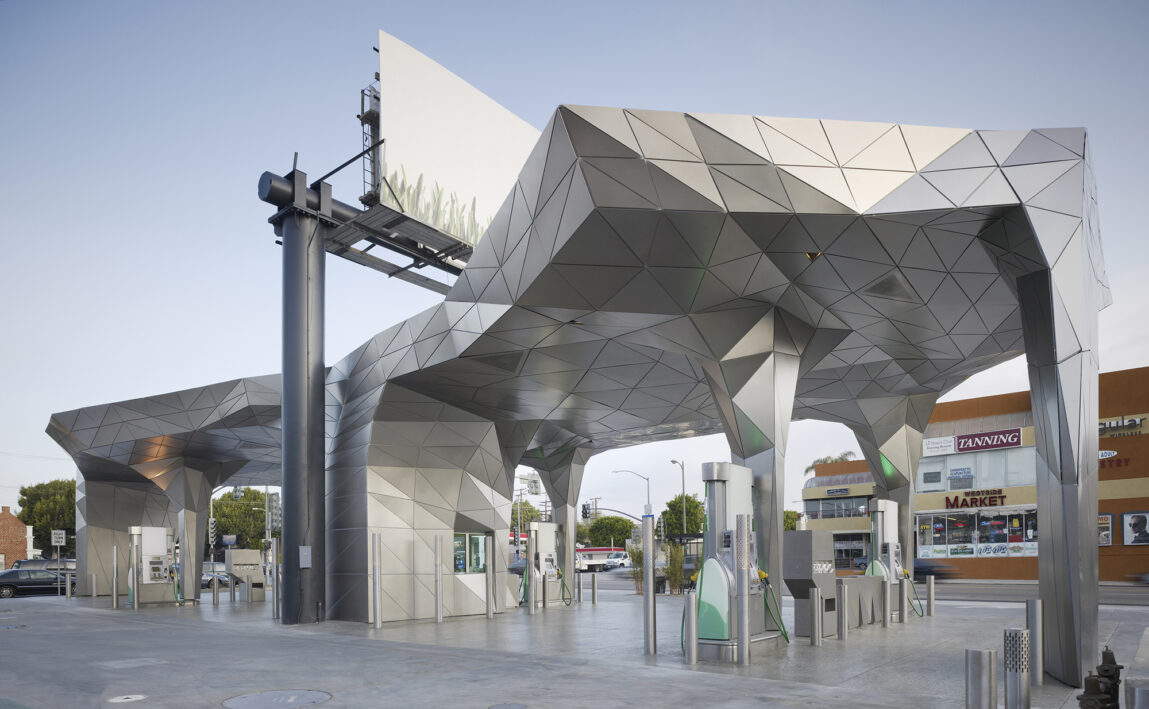Industries such as the hospitality, restaurant and retail sectors in particular have long recognized that good design is also a PR and marketing tool that should not be underestimated and can make a major contribution to image and customer loyalty . Surprisingly, however, it is difficult to find a gas station that even begins to attempt to set itself apart from the competition by being architecturally pleasing, even away from the corporate chains that are all in the same mold. But they do exist: aesthetically sophisticated filling stations. Chapter went on a search and presents three particularly exciting tapping stations.
The white poisonous mushroom
Arne Jacobsen’s most famous design is probably the so-called Ant Chair, which has been produced in variations without interruption since 1952 and has now been sold millions of times. However, only a few people know that the Danish architect and product designer designed a petrol station back in 1936 that bears a certain resemblance to the cult chair in its design language.
The Skovshoved gas Station, located in a northern suburb of Copenhagen, with its oval roof for the petrol pumps and the almost square building attached to it, looks like something out of a textbook on geometric shapes. The ticket booth and dispenser roof are connected by a narrow, rectangular element so that you are protected by a continuous canopy when it rains.
The round petrol pump roof is supported by a single, centrally arranged column, which gave the petrol station its nickname »Paddehadden«, Danish for poisonous mushroom. Arne Jacobsen was one of the very first architects to use this construction method, now known as the »mushroom« or »umbrella structure«, before it became extremely popular in the modernist movement of the 1940s and 1950s. In the style of Jacobsen’s functionalism, the dispensing station is restrained in terms of color, gleaming in glossy white. The facades of the former ticket booth, which now houses an ice cream parlor, are clad with vertically laid Meissen tiles. Practical, various oil and petrol stains are easy to wash off.
Especially at night, the Skovshoved Petrol Station skillfully attracts the attention of motorists. Three lights are mounted on the central concrete column in such a way that they illuminate the oval roof above from below, making it look like a hovering UFO from a distance.
The filling station was originally designed as a prototype by Arne Jacobsen for the US oil company Texaco and was actually intended to be built in series at various locations. Unfortunately, this did not happen, which is why you don’t see any of these decorative toadstools on roadsides outside Skovshoved.

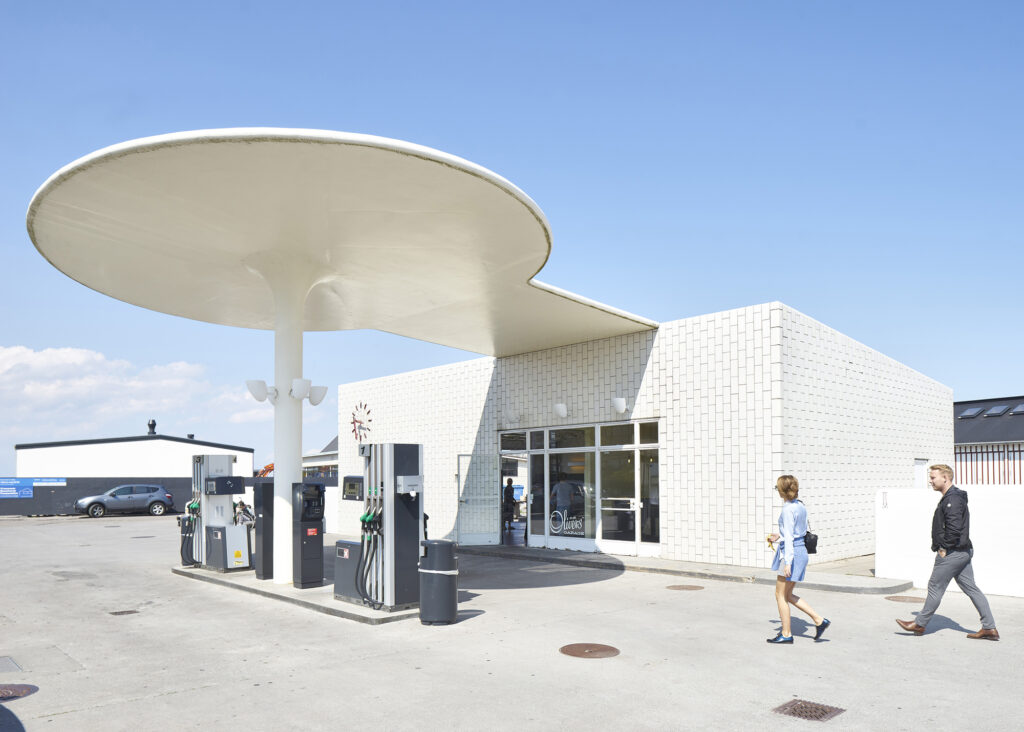
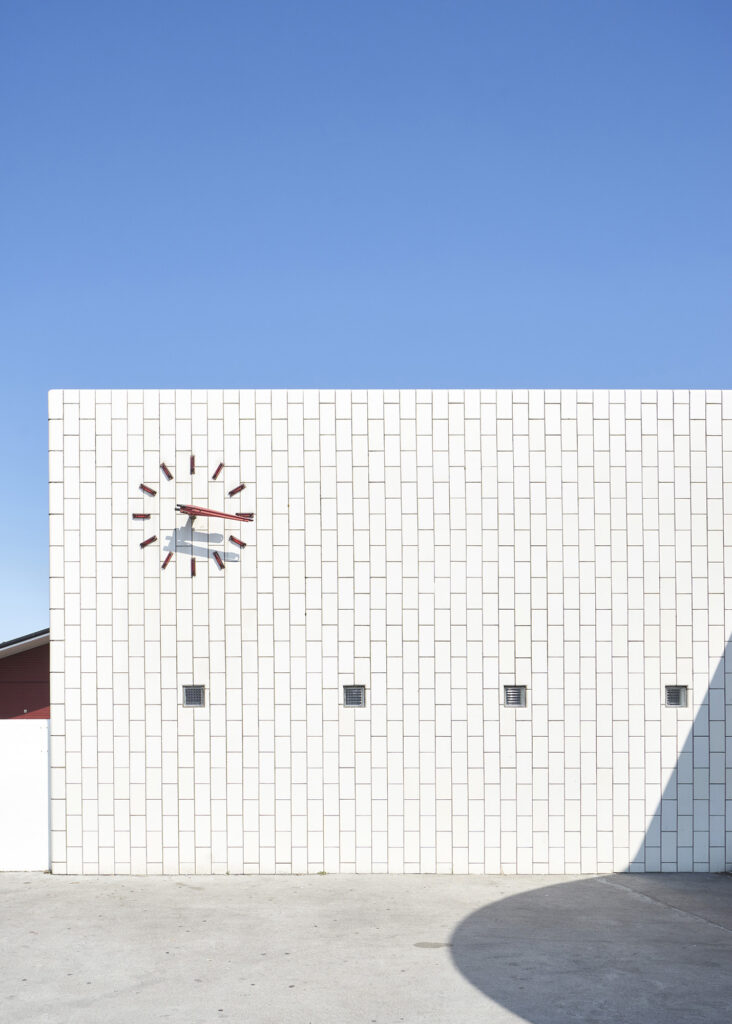
Fill up greener
Can a place whose primary goal is to sell fossil fuels be called environmentally sustainable? In the case of Helios House in Los Angeles, this question should at least not be answered directly and exclusively in the negative. The gas station, designed by Office dA (Monica Ponce de Leon and Nader Tehrani) in cooperation with Johnston Marklee Architects, was largely built using recycled materials. Maximum energy efficiency during construction and operation were also important aspects for the developers. The declared aim was for Helios House to be greener than all previous filling stations.
The various roofs of the petrol station are either green, a natural form of insulation that drastically reduces the use of heating and air conditioning, or covered with solar panels, which saves almost three tons of CO₂ per year. The aesthetic centerpiece of the filling station is a shiny silver stainless steel construction, under which the pumps are lined up.
No fewer than 1,653 triangular steel elements were arranged in such a way that they refract the sunlight in such a way that hardly any electric lighting is required for daytime operation. In conjunction with energy-saving lamps, this saves a further 16 percent of electricity. Visually, the futuristic-looking metal shell of the filling station with its triangles is reminiscent of an abstract honeycomb. In this way, Helios House ‘s appreciation of nature is also subtly emphasized visually. One can only hope that not too many passing Californian Tesla drivers regret switching to the electric vehicle, because that would probably not be in the spirit of sustainability.
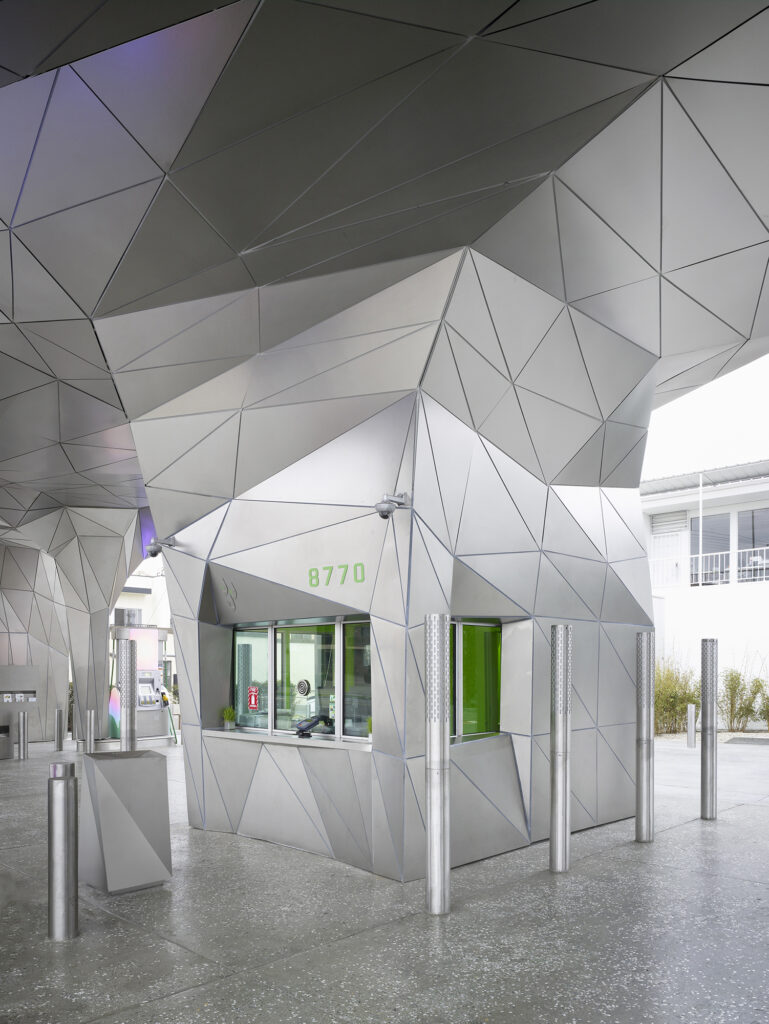

The grace of a highway service station
During his time in office, some of the decisions made by Georgia’s former president Mikheil Saakashvili were not without controversy, but the success with which he promoted modern architecture in the young republic east of the Black Sea must also be acknowledged by political opponents.
In order to beautify the country, Saakashvili launched an architecture program in which various buildings were realized by internationally renowned architects. The office of German star architect Jürgen Mayer H. was directly entrusted with several projects in this context, including a service area at the gates of the capital Tbilisi.
Mayer H.’s typical signature is also unmistakable in this project. Hardly anyone else in his profession would be able to give such a massive concrete steel construction the same lightness that the Gori rest station radiates. The abstracted form of the concrete pillars, which branch out in various directions, makes the building material lose its heaviness. Moreover, it almost seems as if it is the recessed, tinted glass fronts that support the concrete structure. This reinforces the impression of lightness of the building.
Completed in 2011, the Gori gas station houses a service station as well as a supermarket and exhibition space for local artists and cultural events. So it’s no wonder that the building is now a kind of pilgrimage site for Georgian and international architecture enthusiasts. [AD]


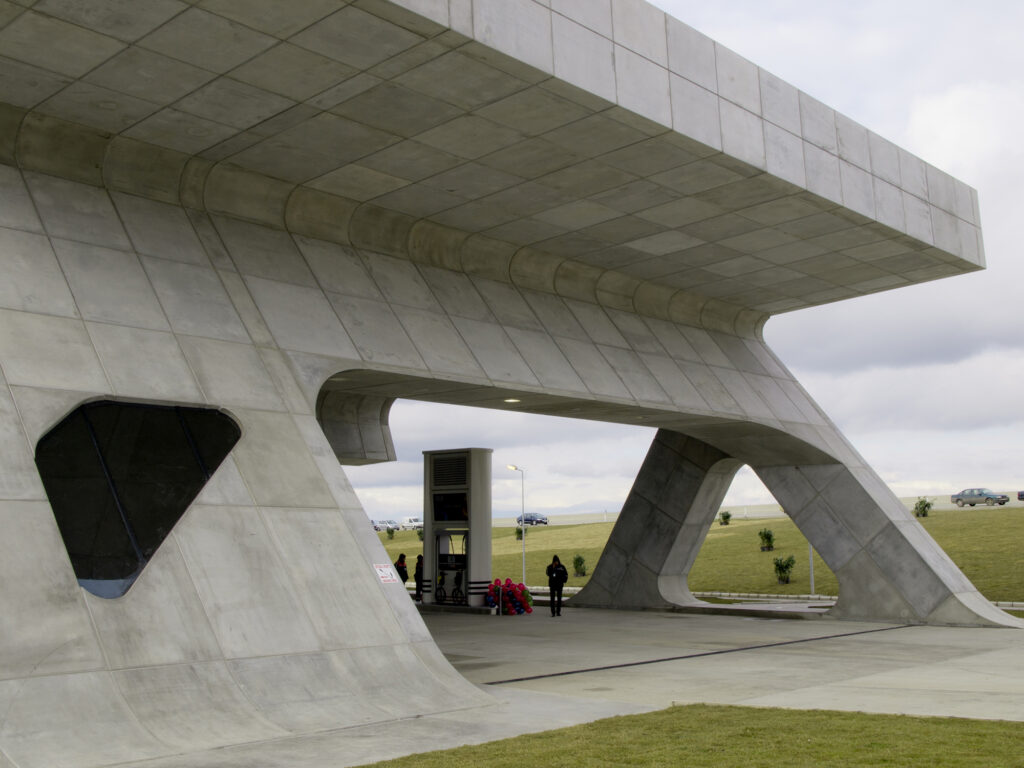
Photo Credits:
Skovshoved Petrol Station – NILS KOENNING
Helios House – ERIC STAUDENMAIER
Gori rest stop – JESKO M. JOHNSSON-ZAHN

